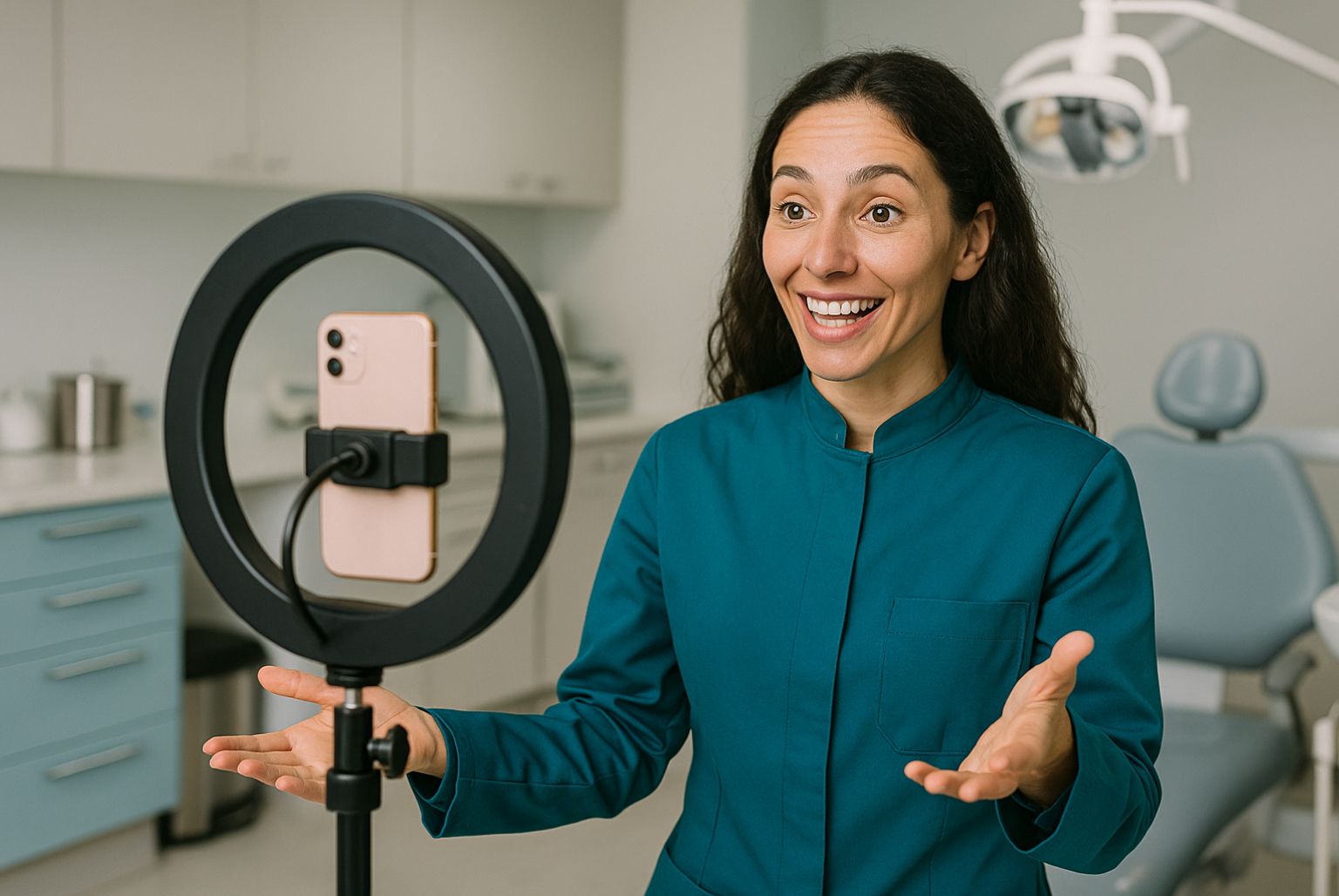Email marketing is potentially one of the most effective ways to grow your clinic. Your mailing list is, after all, a database full of ‘warm leads’, i.e. people who have heard about your practice and given permission for you to contact them with news and marketing.
When you send out marketing emails, you have complete control over your message and who sees it without having to worry about ever-changing search engine or social media algorithms.
If you’re using email marketing to promote your business but not seeing the results you want, there are simple ways that you can improve your email marketing campaigns. Here are our nine top tips:
1. Use A/B spilt testing
A/B split testing is when you send two slightly different versions of the same email to sections of your mailing list to measure which one attracts the best response. You might measure this by looking at open rates, click through rates to your website, sales, or social media shares (or all of the above).
To make your A/B split testing as effective as possible, it’s important to only change one aspect of the emails that you’re split testing at a time. This might mean using two different subject lines for your email, two different offers or ways of wording the same offer, or two different calls to action.
Your email marketing system – whether you use Mailchimp, Mad Mimi, Constant Contact, Aweber or another system altogether – will give you comparison data for any split tests that you carry out so that you can see which email was the most effective.
2. Personalise
In 2014, one third of marketers who took part in a study by Adobe said that personalisation would be essential to successful marketing in the future, especially with the rise of mobile devices. Another study by Experian found that personalised email marketing attracts 29% higher open rates than non-personalised email marketing and 41% higher unique click rates, and yet 70% of businesses still fail to personalise the emails they send out.
Most email marketing systems enable you to include the name of the recipient of an email within the copy as well as the subject line, so that the content feels more personal.
You can also personalise your content by knowing who your patients are and providing content that they will find valuable and engaging. And don’t be afraid of letting your own voice and personality shine through in your email marketing, as this will help patients to feel that they have a connection with your clinic.
3. Don’t send out too many emails
According to data from Campaign Monitor, the number one reason that people unsubscribe from a mailing list is because they are sent too many emails. When asked how businesses can improve their email marketing, Campaign Monitor also reports that the top response is ‘less frequent emails’.
So, how many is too many?
Frustratingly, there is no definitive answer as it really will depend on your list. In their latest National Client Email Report 2015, the UK Direct Marketing Association (DMA) found that the largest group of marketers (39%) send emails to their list two to three times a month on average.
A study by Marketing Sherpa asked 2,057 adults how often they like to receive marketing emails. Ninety percent said ‘At least monthly’ while 60% said ‘At least weekly’. Less than 10% of respondents were happy with ‘Yearly’, ‘Twice a week’ or ‘Three times a week’.
It’s clearly a balancing act. Email too infrequently and you will lose relevance in patients’ minds, but email too often and you risk attracting those dreaded unsubscribes.
Our advice is to choose a small part of your list as a test audience whenever you change the frequency of your email marketing. Do your open rates go up or down? Do more or less people click through to your website? Does a change in frequency attract a flurry of unsubscribes? By carefully monitoring the data, you should eventually hit the frequency sweet spot.
4. Create lists
Another interesting stat from the DMA’s National Client Email Report 2015 is that segmented and targeted emails generate 58% of all revenue. This means that when businesses carefully divide their mailing lists into sub-groups, it’s easier to send out a targeted group-specific email.
If we think about how this applies to dental practices, for example, you may have people on your mailing list who come to you because they are most concerned with the function rather than aesthetics of their teeth. Other patients may want to change the appearance of their smile, while a third group may only want to hear about facial aesthetics treatments.
By breaking your main mailing list into three groups to reflect these different needs, you can create content that will appeal to the individual group. In turn, this should see a higher level of conversions within each segment of your list.
5. Direct traffic back to your blog
Email marketing can be an excellent source of referral traffic and one of your aims should be to attract people back to your website to remind them who you are and how you can help them.
Ideally, every email should feature a call to action, even if it’s only inviting people to read an article in full over on your blog. The call to action serves an important function because it tells your clients what you would like them to do next, which people appreciate. It also shows them that you have a purpose for contacting them, rather than emailing them for the sake of it.
6. Email strategy – pick your day and time
The time and day of the week that you send out your marketing emails will affect your open and clickthrough rates. We found a great article by CoSchedule that rounds up the results of 10 recent studies into the best times and days to send email campaigns. As an overview, these studies found that:
- Tuesday is the best day
- Thursday is the ideal second day if you intend to send two emails a week
- Wednesdays are popular too
The best times for sending marketing emails varied across the 10 different studies but broadly reflected that:
- Many of us check our emails around 6am before we get out of bed
- The next peak is between 10am and 11am when we’re at our desks and have dealt with our most pressing tasks
- Lots of us check our emails at 2pm when we’re experiencing the after-lunch lull at work
- Finally, many of us spend time between 8pm and midnight checking our emails on mobile devices
The best approach is to experiment by sending out your campaigns on a range of days and times over several weeks until you find what works best for your audience. If your ideal patients are women with young children, for example, you might want to send your campaigns to arrive after the morning school run as they may check their phones at this time. Older patients in the 60+ age group are less likely to use a mobile device to check their emails, so you will need to research what times of day they are likely to use their desktop computers.
7. Clean and simple
In our experience, the best email marketing campaigns use a clear and simple one column design that looks great on mobile devices as well as desktops and laptops. By using a clean font, lots of white space, breaking up the copy with headings, and featuring links back to your website and social share buttons, you can lead the reader through the email to the call to action.
8. Link to your blog
We’ve talked above about featuring links back to your website to encourage referral traffic. Let’s take this a step further by saying that you should try to have at least one link to your blog in your email marketing.
One way of doing this is to feature a snippet – perhaps the opening few paragraphs – of your latest article in your email with a ‘Read more’ link at the end, which encourages them to read the whole thing online.
This will help to bring traffic to your most recent pages and increase dwell time on your site, which Google takes as favourable signals about the quality of your content.
9. Catchy subject line
Last, but far from least, is writing an attention-grabbing subject line for your email. The quality of your subject line will determine how many people open your email and read the content or, conversely, how many people choose to ignore it.
Research shows that people prefer short email subject lines and are wary of anything too over-the-top. This article from Hubspot highlights the kind of subject lines that prospects tend to open – this includes:
- Asking a question about the reader’s goals?
- Using the reader’s name (personalisation again!)
- Asking questions as follow ups such as, “Did you get what you were looking for?”
- XX tips to for [pain point]
One study even found that marketing emails with no subject lines attract 8% more opens than those with subject lines!
In our experience, subject lines that highlight you’re sending an ‘Exclusive’ offer, details of a ‘New’ treatment, a ‘Voucher’ or ‘Gift’ all attract good open rates. On the flipside, avoid using the word ‘Free’ as many people see it as spammy.
If you’re not sure which subject lines will work, why not try some A/B split testing?
With all of the points above, the key is to keep an eye on all of the data provided by your email marketing system as this will help you to understand what works for your target audience.




